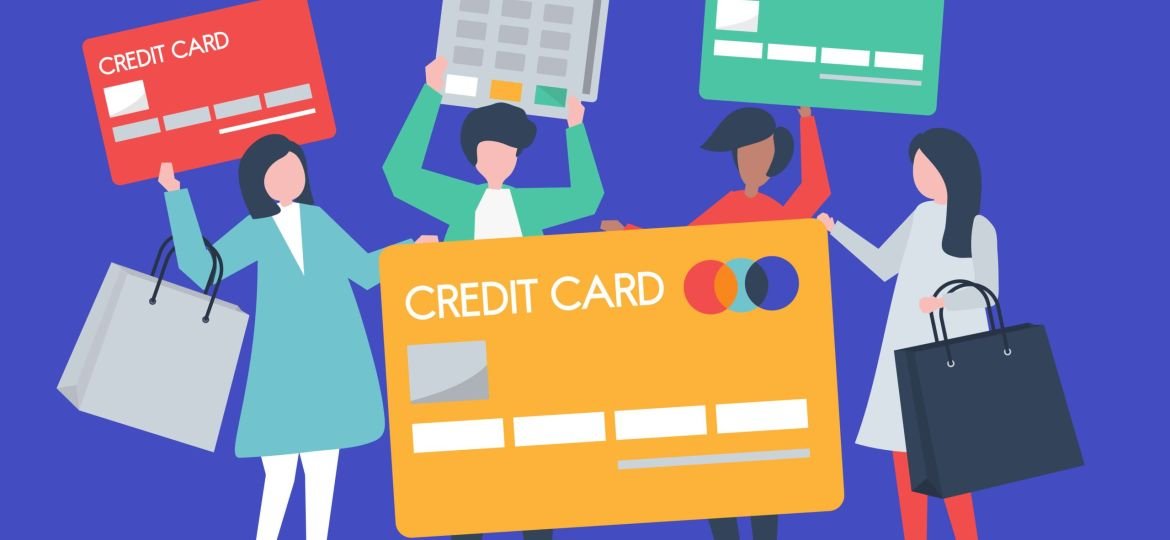
As someone who has navigated the ins and outs of credit card usage for years, I know firsthand how confusing and frustrating credit card interest can be. It’s a topic that often feels shrouded in mystery, with credit card companies seemingly speaking in a secret language of APRs, grace periods, and compounding interest. But the truth is, understanding how credit card interest works is crucial for managing your finances and avoiding costly mistakes.
In this blog post, I’m going to break down the ins and outs of credit card interest in plain English. I’ll explain how it’s calculated, how it can impact your monthly payments, and most importantly, share strategies for minimizing the amount of interest you have to pay. Whether you’re a credit card newbie or a seasoned user, this guide will give you the knowledge you need to take control of your credit card debt and save yourself a significant amount of money in the long run.
What is Credit Card Interest?
At its core, credit card interest is the fee that credit card companies charge you for the privilege of borrowing their money. When you make a purchase with your credit card, you’re essentially taking out a short-term loan from the card issuer. In exchange for providing you with that credit, the card issuer charges you a percentage of the balance as interest.
The interest rate on your credit card is typically expressed as an Annual Percentage Rate (APR). This is the annualized rate of interest you’ll pay on any outstanding balance you carry from month to month. Credit card APRs can range anywhere from around 12% to as high as 30% or more, depending on factors like your credit score, the type of card you have, and current market conditions.
It’s important to note that credit card interest is not a one-time fee – it’s an ongoing charge that will continue to accrue on your balance until it’s paid off. This means that even if you only carry a small balance from month to month, the interest can quickly add up and become a significant expense.
How is Credit Card Interest Calculated?
The way credit card interest is calculated can be a bit complex, but understanding the basics can go a long way in helping you manage your debt.
Here’s a quick overview of how it works:
- Daily Periodic Rate: Your APR is first converted into a daily periodic rate by dividing it by 365 (the number of days in a year). For example, if your APR is 18%, your daily periodic rate would be 0.0493% (18% / 365).
- Daily Interest Charge: The daily periodic rate is then applied to your average daily balance (the sum of your daily balances divided by the number of days in the billing cycle) to determine the daily interest charge.
- Compounding Interest: Credit card interest compounds daily, meaning that the interest you’re charged each day is added to your balance, and then that new balance is used to calculate the next day’s interest. This can cause your balance to grow exponentially over time.
- Billing Cycle Interest: At the end of your billing cycle, all the daily interest charges are added up to determine the total interest charge for that month.
The key thing to understand here is that even small changes in your APR or your average daily balance can have a big impact on the amount of interest you end up paying. That’s why it’s so important to stay on top of your credit card balances and work to pay them down as quickly as possible.
Strategies for Minimizing Credit Card Interest
Now that you have a better understanding of how credit card interest works, let’s talk about some strategies you can use to minimize the amount you have to pay:
1. Pay Your Balance in Full Each Month
The single most effective way to avoid credit card interest is to pay your entire balance in full each month before the due date. When you do this, you take advantage of the grace period offered by most credit card issuers, which means you won’t be charged any interest on new purchases.
This strategy requires discipline and careful budgeting, but it can save you hundreds or even thousands of dollars in interest charges over time. Even if you can’t pay the full balance, try to pay as much as you can to reduce the amount of interest that accrues.
2. Negotiate a Lower APR
If you have a good credit history and have been a loyal customer, you may be able to negotiate a lower APR with your credit card issuer. Give them a call and politely explain that you’re looking to reduce your interest rate. They may be willing to lower it, especially if you have a history of on-time payments.
You can also try applying for a new credit card with a lower APR and transferring your balance. Just be sure to read the fine print and watch out for balance transfer fees.
3. Take Advantage of Promotional APRs
Many credit card companies offer promotional APRs, such as 0% interest for the first 12-15 months. If you have a large balance that you’re trying to pay off, taking advantage of one of these offers can save you a significant amount in interest charges.
Just be sure to have a plan in place to pay off the balance before the promotional period ends, as the regular APR will likely be quite high.
4. Use a Debt Consolidation Loan
If you have multiple credit card balances with high interest rates, you may be able to save money by consolidating them into a single personal loan with a lower interest rate. This can simplify your payments and reduce the overall amount of interest you’re paying.
When shopping for a debt consolidation loan, be sure to compare interest rates, fees, and repayment terms to find the best option for your situation.
5. Avoid Carrying a Balance
Finally, the best way to minimize credit card interest is to avoid carrying a balance in the first place. This means only using your credit card for purchases you can afford to pay off in full each month.
If you do find yourself with a balance, make a plan to pay it down as quickly as possible. Even small extra payments each month can make a big difference in the long run.
Comparison of Credit Card Interest Rates
To give you a better sense of how credit card interest rates can vary, here’s a comparison of the average APRs for different credit card types:
| Card Type | Average APR |
|---|---|
| Rewards Credit Cards | 16.32% |
| Cash Back Credit Cards | 15.32% |
| Balance Transfer Credit Cards | 14.13% |
| Low Interest Credit Cards | 12.46% |
As you can see, the APR can range quite a bit depending on the type of card you have. Rewards and cash back cards tend to have higher interest rates, while low-interest and balance transfer cards offer more favorable terms.
It’s important to carefully consider the trade-offs when choosing a credit card. While rewards and cash back can be enticing, they may not be worth it if you end up carrying a balance and accruing high-interest charges.
Comparison of Credit Card Minimum Payments
Another important factor to consider when it comes to credit card interest is the minimum payment required each month. Here’s a comparison of the minimum payment requirements for different credit card balances:
| Balance | Minimum Payment |
|---|---|
| $1,000 | $25 |
| $5,000 | $100 |
| $10,000 | $200 |
As you can see, the minimum payment increases as the balance grows, but it’s typically a relatively small percentage of the total balance. This can make it tempting to only pay the minimum each month, but doing so can lead to years of interest charges and a much higher total cost.
For example, if you have a $5,000 balance with an 18% APR and only pay the minimum of $100 per month, it would take you over 6 years to pay off the balance, and you’d end up paying over $2,500 in interest. By contrast, if you paid $200 per month, you could pay off the balance in just over 2 years and save over $1,000 in interest.
The key takeaway here is that it’s important to pay as much as you can each month, even if it’s more than the minimum. This will help you pay down your balance faster and minimize the amount of interest you accrue over time.
Ready to take control of your finances? Visit upgrade.com now to explore a range of financial products, including Personal Loans, Auto Refinance Loans, Home Improvement Loans, Personal Credit Lines, and Upgrade Card. Let Upgrade help you achieve your financial goals today!
Conclusion
Credit card interest can be a frustrating and costly reality of modern financial life, but with the right strategies and knowledge, you can take control and minimize the impact it has on your finances.
By understanding how credit card interest is calculated, taking advantage of grace periods and promotional APRs, negotiating lower rates, and paying down your balances as quickly as possible, you can save yourself hundreds or even thousands of dollars in the long run.
Remember, the key is to be proactive and disciplined in your credit card usage. With a little bit of effort and planning, you can keep credit card interest at bay and focus on building a healthy, sustainable financial future.
Frequently Asked Questions (FAQs) About Credit Card Interest
1. How often is credit card interest charged?
Answer: Credit card interest is typically charged daily, based on your average daily balance and the card’s daily periodic rate. The total interest charge for the month is then added to your balance at the end of each billing cycle.
2. Can I avoid paying credit card interest altogether?
Answer: Yes, you can avoid paying credit card interest by paying off your full balance before the due date each month. When you do this, you take advantage of the grace period offered by most credit card companies, which allows you to avoid interest charges on new purchases.
3. What factors determine the interest rate on my credit card?
Answer: Several factors can influence the interest rate on your credit card, including your credit score, the type of card you have, current market conditions, and your payment history. Generally, the higher your credit score, the lower the interest rate you’ll be offered.
4. Is it worth transferring my credit card balance to a card with a lower APR?
Answer: Transferring your credit card balance to a card with a lower APR can be a smart move if you’re carrying a high balance and paying a lot in interest. Just be sure to read the fine print and factor in any balance transfer fees to make sure it’s worth it in the long run.
5. How can I negotiate a lower APR with my credit card issuer?
Answer: To negotiate a lower APR with your credit card issuer, call their customer service department and politely explain that you’re looking to reduce your interest rate. Highlight your good payment history and loyalty as a customer. They may be willing to work with you to lower your rate, especially if you have other offers from competitors.
6. What should I do if I can’t pay off my full balance each month?
Answer: If you can’t pay off your full balance each month, try to pay as much as you can to reduce the amount of interest that accrues. Consider making extra payments throughout the month or setting up a payment plan to pay off the balance as quickly as possible. Avoid only making the minimum payment, as this can lead to years of costly interest charges.
Share Your Expertise, Build Your Business. Tired of limitations?
Create & sell online courses with Teachable. Keep 100% control. Start your free!


















